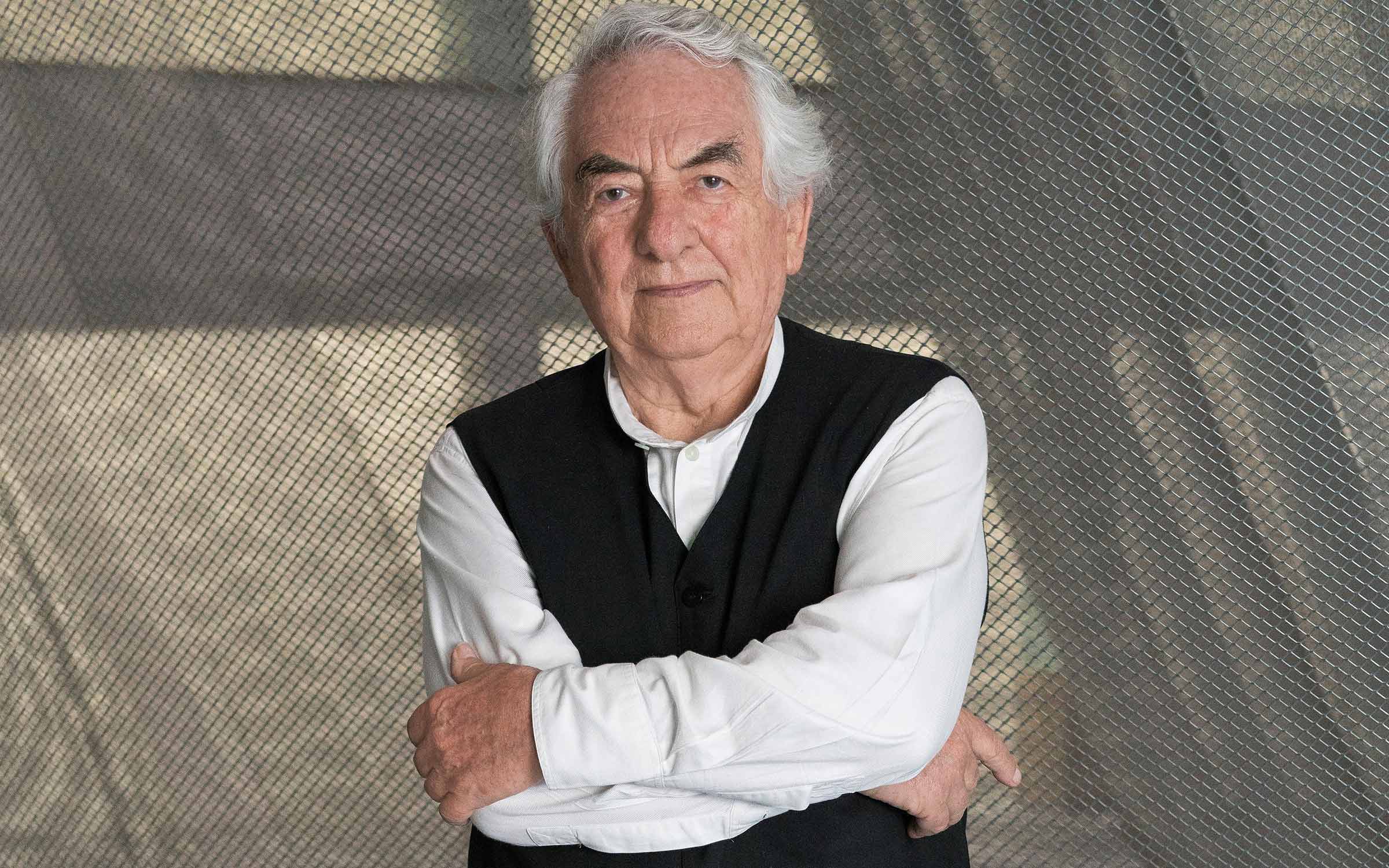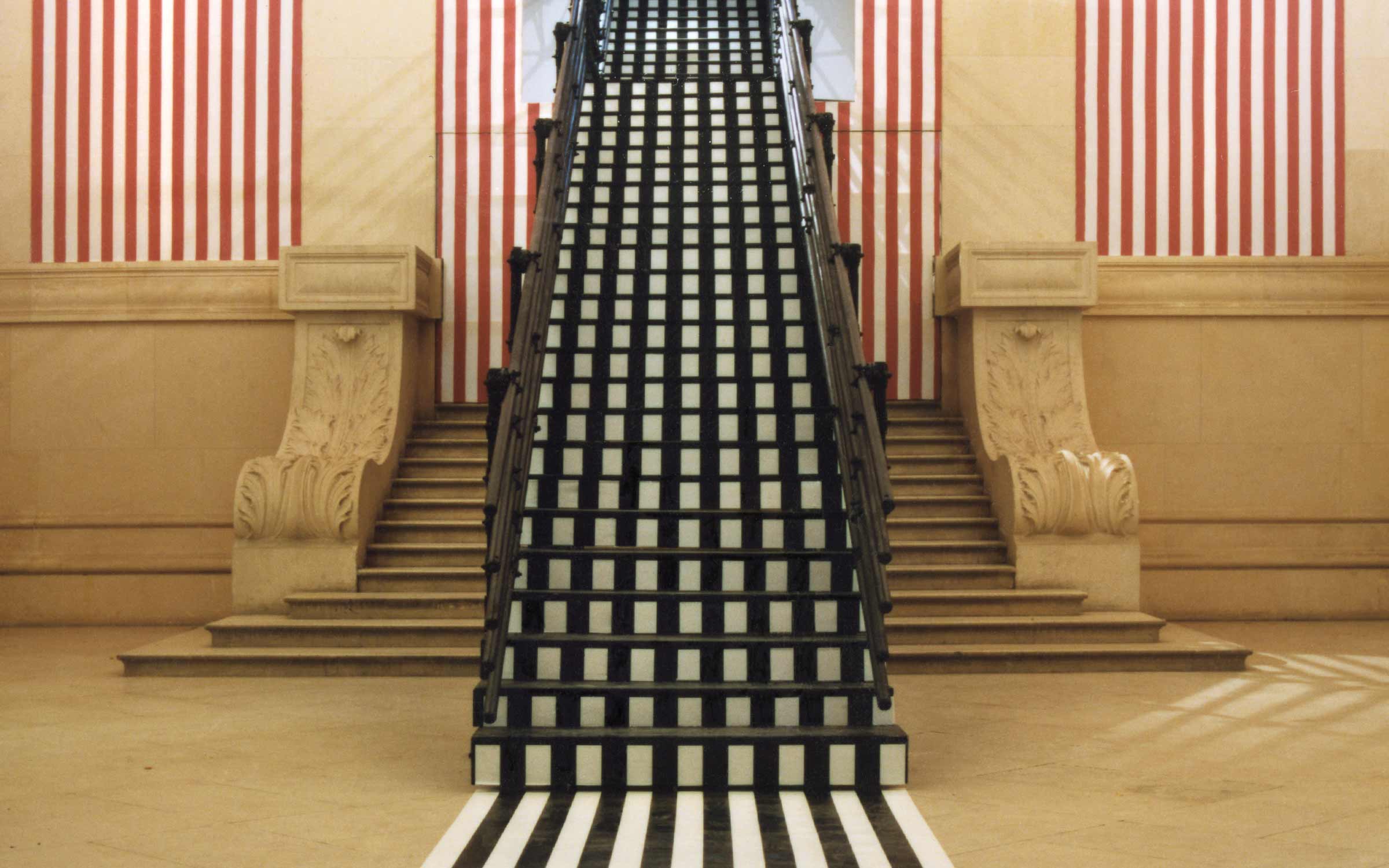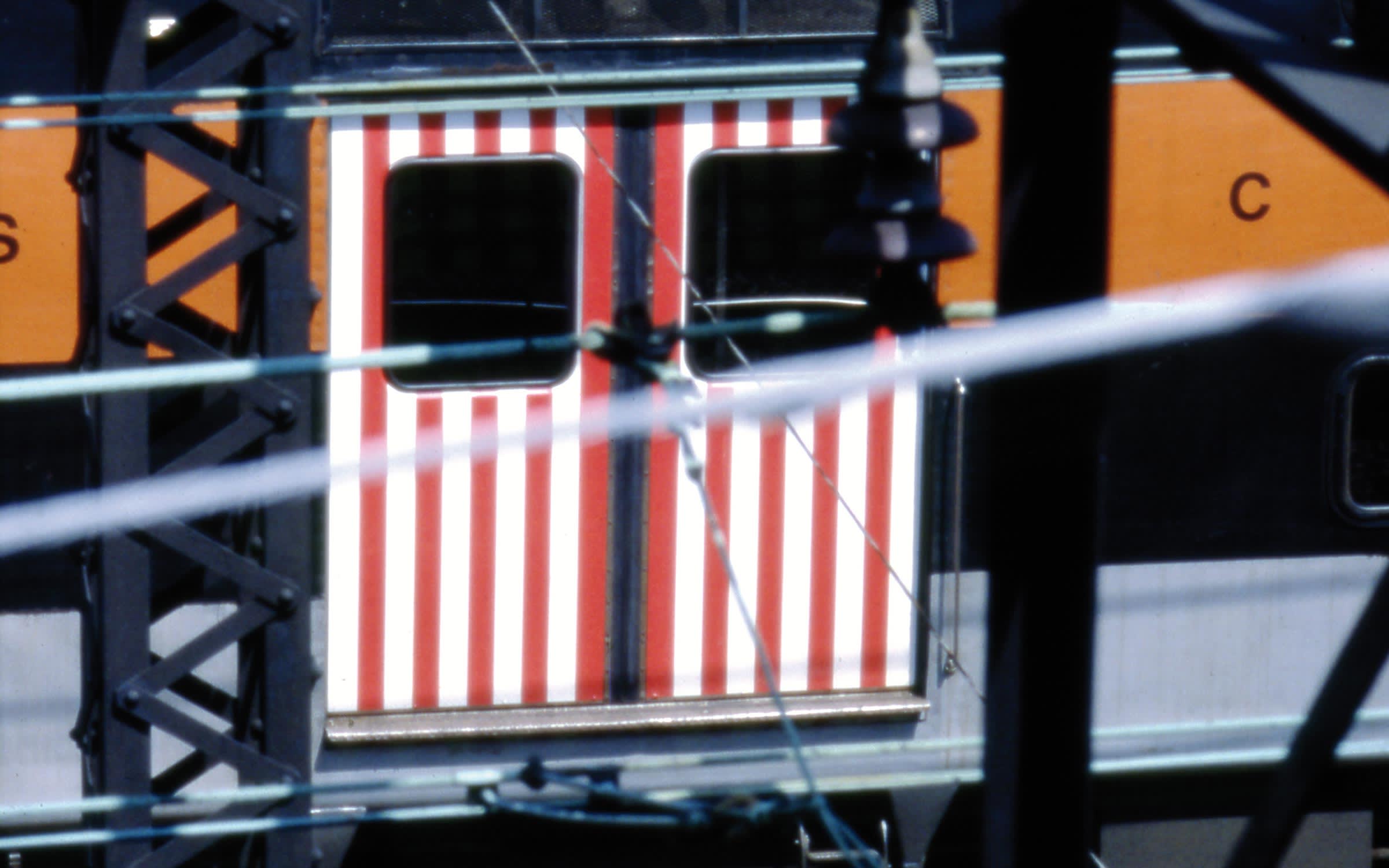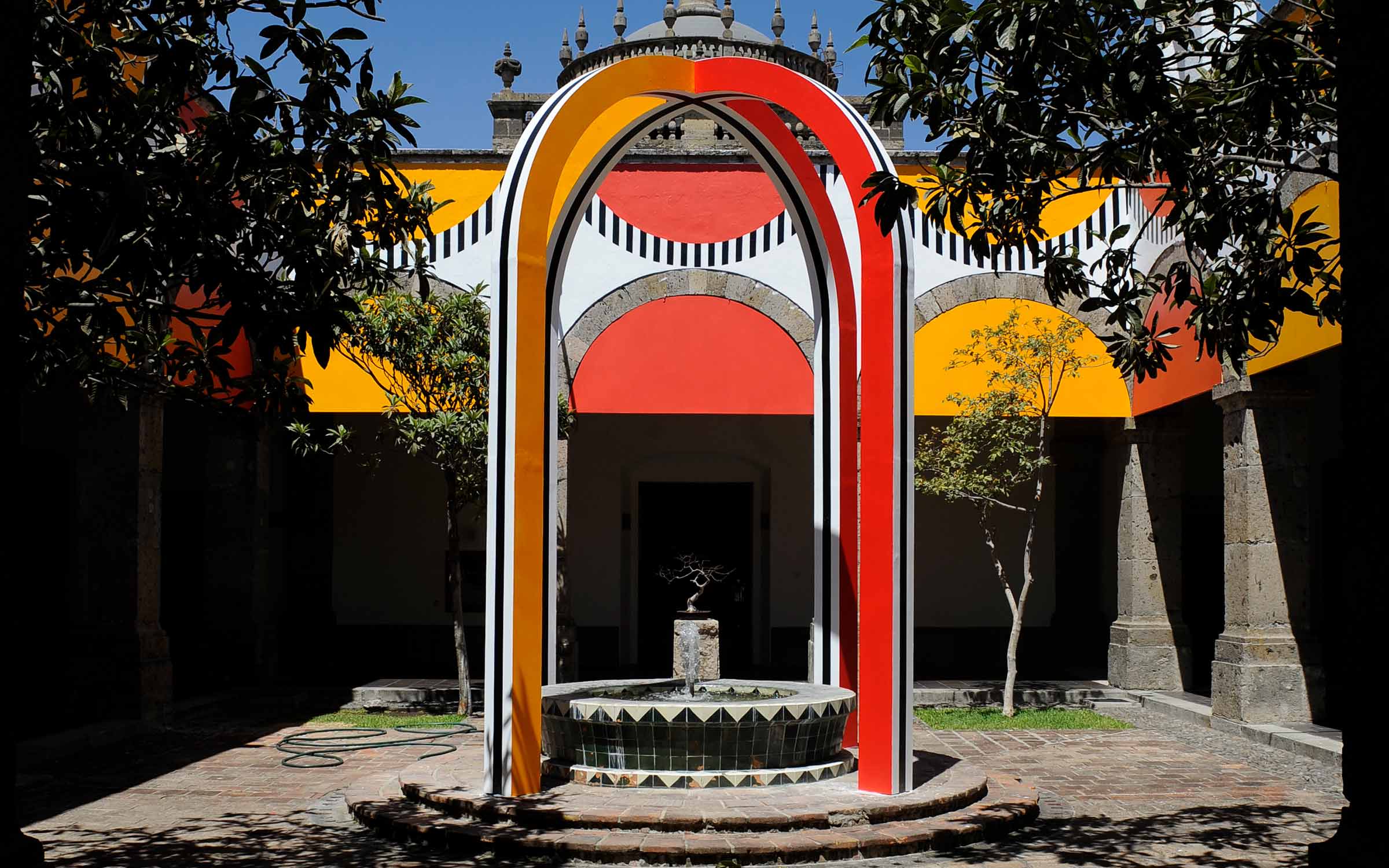Freedom to the viewer! An interview with Daniel Buren
Ahead of the unveiling of his monumental work in the Unlimited sector, the veteran French artist explains his love for scaffolding and how his pieces keep people on their toes

by Karim Crippa
For more than five decades, Daniel Buren has tirelessly and radically questioned how art, museums, and audiences relate to each other. Known for his signature pattern of vertical stripes and site-specific interventions, Buren's contribution to this year’s Art Basel’s Unlimited sector, presented by Galleria Continua, is a piece twenty meters long, and over five meters high. It consists of three platforms linked by staircases, featuring his unmistakable motif. The piece is emblematic of the French artist's oeuvre, interrogating the exhibition space's formal aspects, rather than addressing questions of Buren's worldview or personal history. In this interview, he talks about the significance of his stripe banners, his practice’s ultimate goal, and why he’ll never tell you what his favourite restaurant is.
Tell us about the work you will be showing in the Unlimited sector of Art Basel.
It is similar to a piece I did three years ago at Galleria Continua in San Gimignano, Una cosa tira l’altra [2015]. It continues to investigate scaffolding tubes, a material I first used at least 30 years ago. Visitors can stroll on different platforms and see not only other works, but also the building itself from different heights, which is rarely a given in an exhibition space. They can also walk around it and consider it like a traditional sculpture. Along the different platforms I’m installing a frieze of white and green fabric, which completely transforms the scaffolding and works like a visual guide for the viewer’s gaze. So what I really like about it are the many points of view and options it offers.

Can you remember the first time you used the material?
It must have been for a show at the Musée des Arts Décoratifs in Paris. I had built a very large, straight staircase on scaffolding that went from the entrance hall to the first floor, replacing the very tortuous original one. Another time, I built a spiraling structure around a fountain in Rotterdam that has a large column topped with an angel sculpture. It looked perfectly regular from below, but once you reached the sculpture, you would realize it was at least 3 meters high. From up there, you could then see an area of the city’s famous port you don’t notice at street level.
I also partially enveloped the Musée Rath in Geneva with scaffolding and black and white fabric for Une Enveloppe peut en cacher une autre [1989]. That was yet another way of using the material. I really like the way it allows me to modulate vertical space in a simple manner. It’s easy to use, very supple, and gives you the possibility to achieve strikingly extravagant results.

Movement seems to be inherent in your practice. Many of your works are installed in situations of transit – are you interested in this idea of people passing through them in an almost subconscious way?
Yes, it has always interested me on a philosophical level. When I first explored that idea, I would install my works on moving objects such as escalators, buses, or train cars. It was a way of introducing the temporality of movement to the viewer. In that vein, I think my most successful piece was shown at the Art Institute of Chicago in 1980. From a large window on one of the museum’s sides, you could see train tracks. I had systematically covered the doors of all trains passing there with adhesive paper in five different colors. In the exhibition space itself, all you could see were the work’s title, Watch the doors please!, and the trains’ timetable. It was very funny – sometimes you would have 20 to 30 people waiting there, and when the train passed by, they would have six seconds to see the work. The question it addressed had barely been considered – how much time does one need to look at an artwork? We’re so freed from that question we don’t consider it, but in that case, the time of vision was included in the work’s context.
That must have been exciting for the viewer. It actually brings me back to a statement of yours – ‘My work is supposed to be boring.’ Given the attention your practice generates, do you think the public is actually interested in boredom, or do your works fail in their mission to be boring?
[Laughs.] Well, maybe that’s true! But you see, that statement only reflects what people were saying about my work early on. I have been using stripes – without knowing I would be using them for so long – as a simple and ultimate pattern. I don’t show stripes, they allow me to show things. What happens around them? How does the work influence its environment? I’m the first one to tell you they are banal and boring. If you see them as a painting, you’re on the wrong track. They are meant to challenge the idea of a frozen point of view.
So your work is intrinsically linked to the power it gives the viewer?
That’s the best I can do. When someone tells me, ‘That precise angle makes your work beautiful’, I always answer, ‘You’re absolutely right’, even if I myself see 150 other interesting points of view. You’re allowed to have a preference. More than power, my work should give the viewer a lot of freedom.

You often say that the space precedes the work. Many of your pieces have been installed in historical settings, including the Palatine Hill in Rome and the Palais-Royal in Paris. How does history influence your work?
I don’t have a system for achieving something. There are always plenty of elements to consider. The first one is, of course, the architecture, but then also the people I work with. Different parameters will influence the final result. Sometimes one aspect prevails, at other times I will discover things in the moment that will allow me to produce a completely original work, something I will never do again.
Three or four years ago, I had an exhibition in Guadalajara, at Hospicio Cabañas [‘Buren. De un patio a otro: Laberinto – trabajos In Situ’, 2014]. It’s a wonderful space, a former hospital built around a system of more than 20 patios and inner courtyards. I developed the show in relation to these patios, because not only do you hardly ever work with that type of space, but you certainly don’t get to intervene in 20 inner courtyards at the same time. It gave me a spatial depth you can’t find anywhere else.
You once said you wanted to eliminate your personal taste from your work. That sounds tricky to achieve – how do you proceed?
That is a very personal, almost ethical position I developed when I was very young and one I feel is still very valid. Of course, I exist like anybody else, but I always try to put aside any personal elements from my practice. It’s actually not tricky at all – I will always separate biographical information from what I am trying to say with my work. It doesn’t inform it at all. If you ask me about childhood memories or what my favorite restaurant is, I won’t answer. My taste is irrelevant.
Karim Crippa is an author and occasional curator based in Vienna, Austria.

